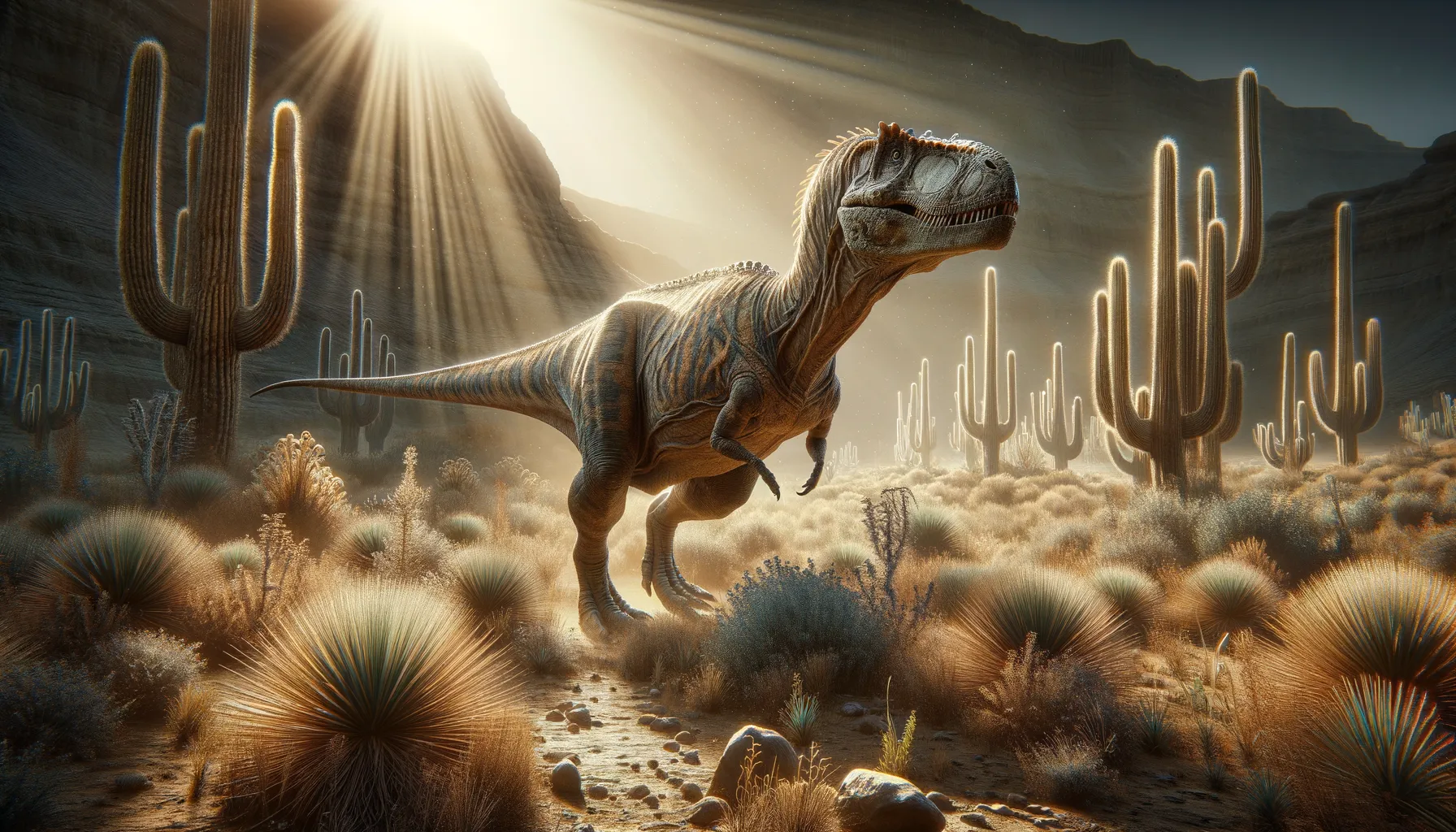
Machairasaurus
A dino of mystery with a unique bite.
Period
Cretaceous
Length
Up to 4 meters long.
Height
Around 1.5 meters tall at the hips.
Weight
Approximately 200 to 300 kg.
Machairasaurus was a theropod dinosaur known from the Late Cretaceous period. Its remains have been found in the Gobi Desert, indicating it lived in a semi-arid environment. Little is known about its lifestyle, but it may have been a herbivore or an omnivore. This dinosaur is notable for its slender jaws and distinctive traits that suggest a specialized diet.
Diet
Machairasaurus is believed to have been an omnivore, potentially feeding on plants and small animals. Its unusual jaw structure suggests it had a specialized diet, but the exact details remain uncertain.
Hunting
While specific hunting behaviors of Machairasaurus are not well-documented, it might have relied on its agile movements to capture small prey. Its natural habitat suggests it was adapted to both gathering plant material and opportunistic hunting.
Environmental challenges
Living in the semi-arid regions of the Gobi Desert, Machairasaurus faced extreme temperatures and limited water resources. The scarcity of food may have required it to adapt a flexible diet. Predation by larger dinosaurs would have been a constant threat, necessitating survival strategies such as camouflage or seeking shelter.
Speed
Machairasaurus was likely slow-moving.
Lifespan
Its lifespan is not well-known.
First discovery
Discovered in the Gobi Desert, Inner Mongolia.
Fun Facts
- Machairasaurus lived during the Late Cretaceous period, around 70 million years ago.
- Its fossil remains were discovered in Inner Mongolia, a region known for its rich dinosaur deposits.
- Machairasaurus had unique blade-like claws, which inspired its name, meaning 'knife lizard'.
- It belonged to the theropod family, a group of bipedal dinosaurs, though it wasn't as large as some of its famous relatives.
- Machairasaurus was likely an omnivore, possibly feeding on plants, small animals, and insects.
- The dinosaur is known from only partial skeletons, leaving much of its life and appearance a mystery.
- Machairasaurus's environment was a diverse ecosystem that included many other dinosaur species, giving clues about its lifestyle.
Growth and Development
Machairasaurus likely experienced a growth cycle similar to other small theropods, with rapid juvenile growth followed by a slower maturation phase. Fossil evidence suggests it may have had a relatively short developmental period. Its growth rates would have been influenced by environmental conditions and food availability.
Habitat
Machairasaurus inhabited the Gobi Desert, characterized by its dry and rocky terrain. Fossils suggest it lived in a region with seasonal rains, providing intermittent vegetation growth. This environment shaped its adaptation to survive both droughts and predators.
Interaction with other species
Machairasaurus may have coexisted with a variety of dinosaurs, competing for food with similar-sized species. Fossil evidence shows it shared its environment with larger predators, which could have posed a danger. Interaction with other species might have included competition, predation avoidance, and possibly symbiotic relationships.
Natural lifespan
Machairasaurus's exact lifespan is unknown, possibly indicating a typical theropod life expectancy.
Reproduction
Machairasaurus likely laid eggs, as evidenced by similar theropods from the region. It may have built nests and engaged in parental care, with mothers potentially guarding the eggs until hatching. Reproductive behavior would align with patterns seen in other small theropods.
Social behaviour
Little is known about the social behavior of Machairasaurus; it may have been a solitary creature. Alternatively, it could have engaged in loose group dynamics, especially during migration or mating seasons. Understanding its social interactions remains speculative without direct fossil evidence.
Fossil locations
Machairasaurus fossils have been discovered in the Gobi Desert, specifically in the Bayan Mandahu area. This location is known for a diversity of Late Cretaceous dinosaur fossils. The region provides significant insight into the ecosystem in which it lived.
